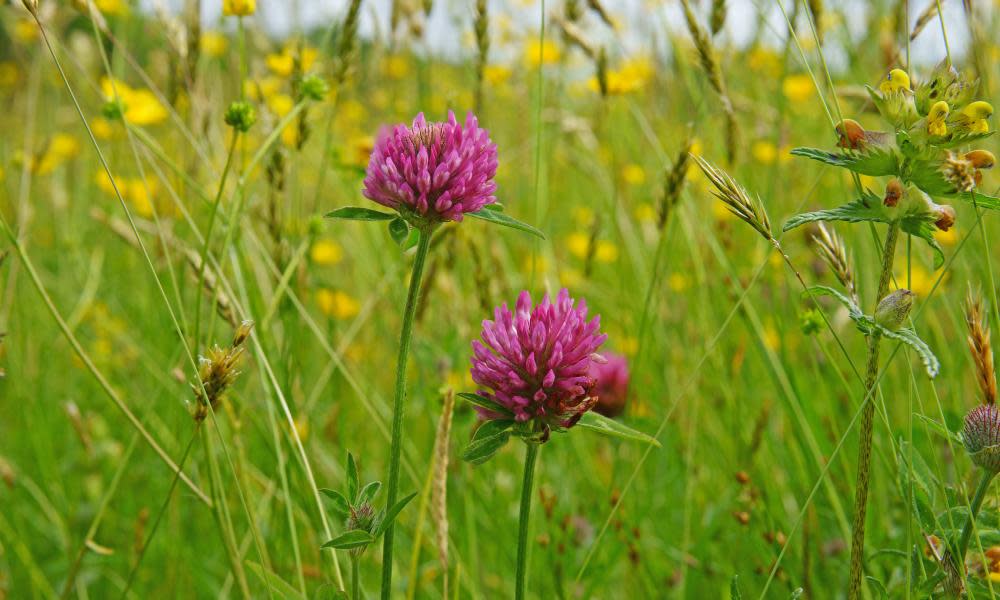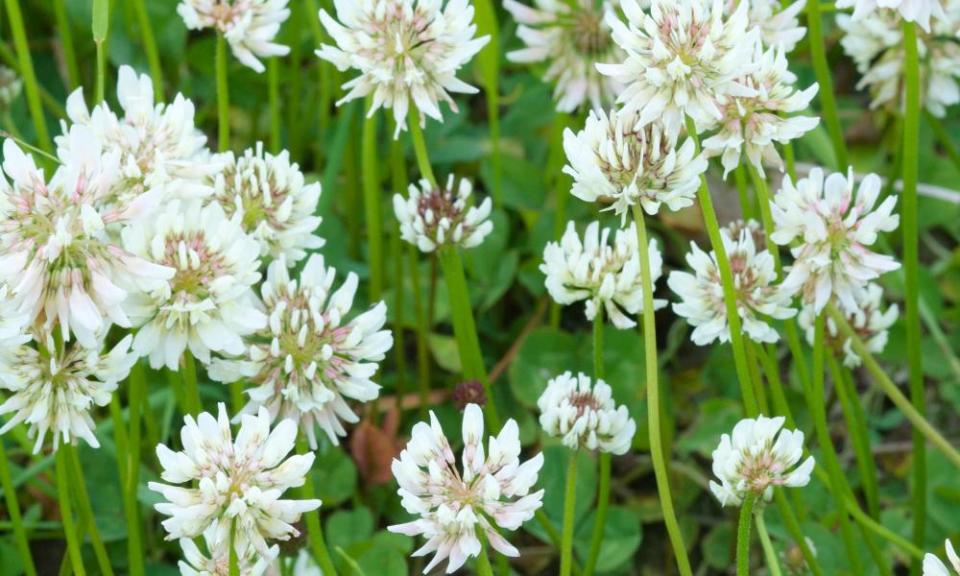How to grow native red clover

My love is always looking for lucky leaves if there’s clover about. I’ll find her with her head down, hunting patiently through a patch. I, however, am looking for something else from our native red clover, Trifolium pratense.
It is a good-hearted plant, full of value: an amazing medicine, a tough perennial that is an excellent green manure, and a friend to many a beneficial insect. As it is a perennial evergreen, it photosynthesises constantly, which means it is endlessly filling the root zone in the soil with nutrients. This increases microbial activity.

Red clover has deep roots that help to improve structure by binding soil together. In summer, it will aid moisture retention, and in winter it will prevent erosion. It is particularly useful for heavier clay soils. Clover is famous for fixing atmospheric nitrogen into the soil via its nodules; this in turn increases the nitrogen available for other plants.
Related: Oyster shells will give your soil a balanced boost | Alys Fowler
It flowers endlessly throughout the summer, and the blooms are full of goodies, namely nectar and pollen, for the long-tongued bumblebees. It is so full of nectar than even shorter-tongued honeybees get a look-in. The flower heads are also rich in minerals and phytoestrogens, which means they are often used in herbal medicine for menopausal symptoms, aiming to balance hormones and relieve hot flushes and breast pain. They are also used for problem skin conditions, such as eczema. When dried, the flower heads work well as a nourishing and cleansing herbal tea.
It can be used as a traditional green manure, sowing in blocks, and also works well for paths, because it can tolerate foot traffic and mowing, and, unlike grass, will feed the soil even under those conditions. If not mown too short, it can reach up to 60cm, making it a good habitat for predatory insects, such as beetles.

If you have a lawn, it is highly likely you may already have some red clover, though there is more than one type; white (Trifolium repens) is equally useful to the soil, but is not used medicinally. You can tell the difference between the two when not in flower by the underside of the leaves: red clover is hairy.
Sow from now through early September. If you are sowing for a path, you’ll have to keep off the track until it establishes, which will happen quickly enough. If you want to add clover to an existing lawn, scarify your grass hard with a rake – you want to remove all buildup of thatch and expose some bare ground – then scatter seeds and rake again, but this time lightly, so the seed makes contact with the soil. Water in well and keep watering until you see the first signs of germination.


